Sociological Analysis: The Changing Family Dynamics in the Year 2100
VerifiedAdded on 2023/06/03
|17
|1574
|255
Presentation
AI Summary
This presentation provides a sociological analysis of the family in 2100, examining anticipated changes in family structures, gender roles, and relationships. It explores factors like increasing divorce rates, the rise of extended families, same-sex couples, and childless families. The presentation uses diagrams, tables, and pie charts to illustrate these projections, considering the influence of technology, life expectancy, and changing societal norms. It also discusses the evolving functions and responsibilities within the family, highlighting the shift towards more equitable gender roles and their economic, social, political, and biological effects. The presentation concludes by emphasizing the dynamic and evolving nature of the family unit, driven primarily by technological advancements and societal shifts, while still maintaining its significance as a fundamental social unit.
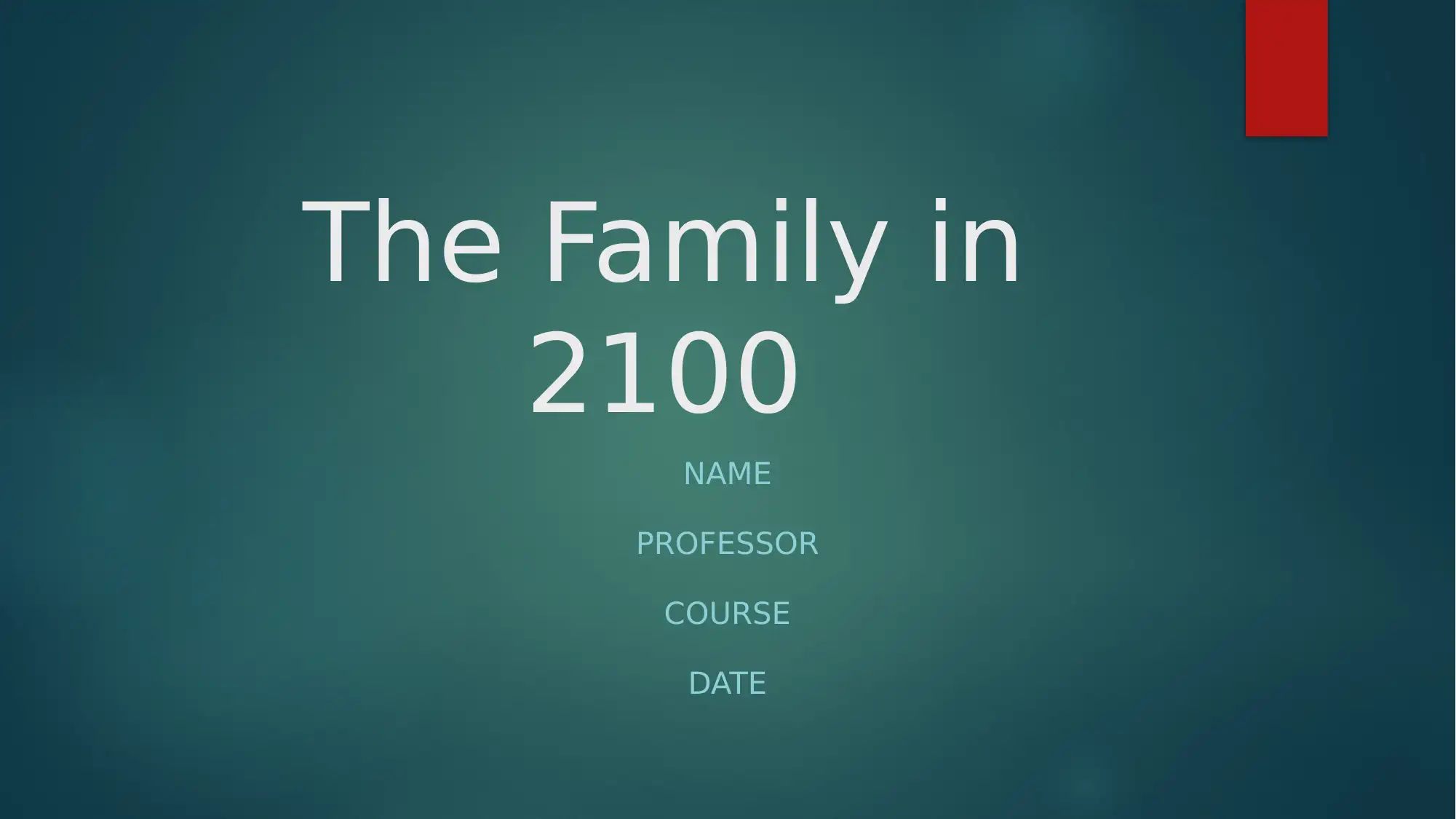
The Family in
2100
NAME
PROFESSOR
COURSE
DATE
2100
NAME
PROFESSOR
COURSE
DATE
Paraphrase This Document
Need a fresh take? Get an instant paraphrase of this document with our AI Paraphraser
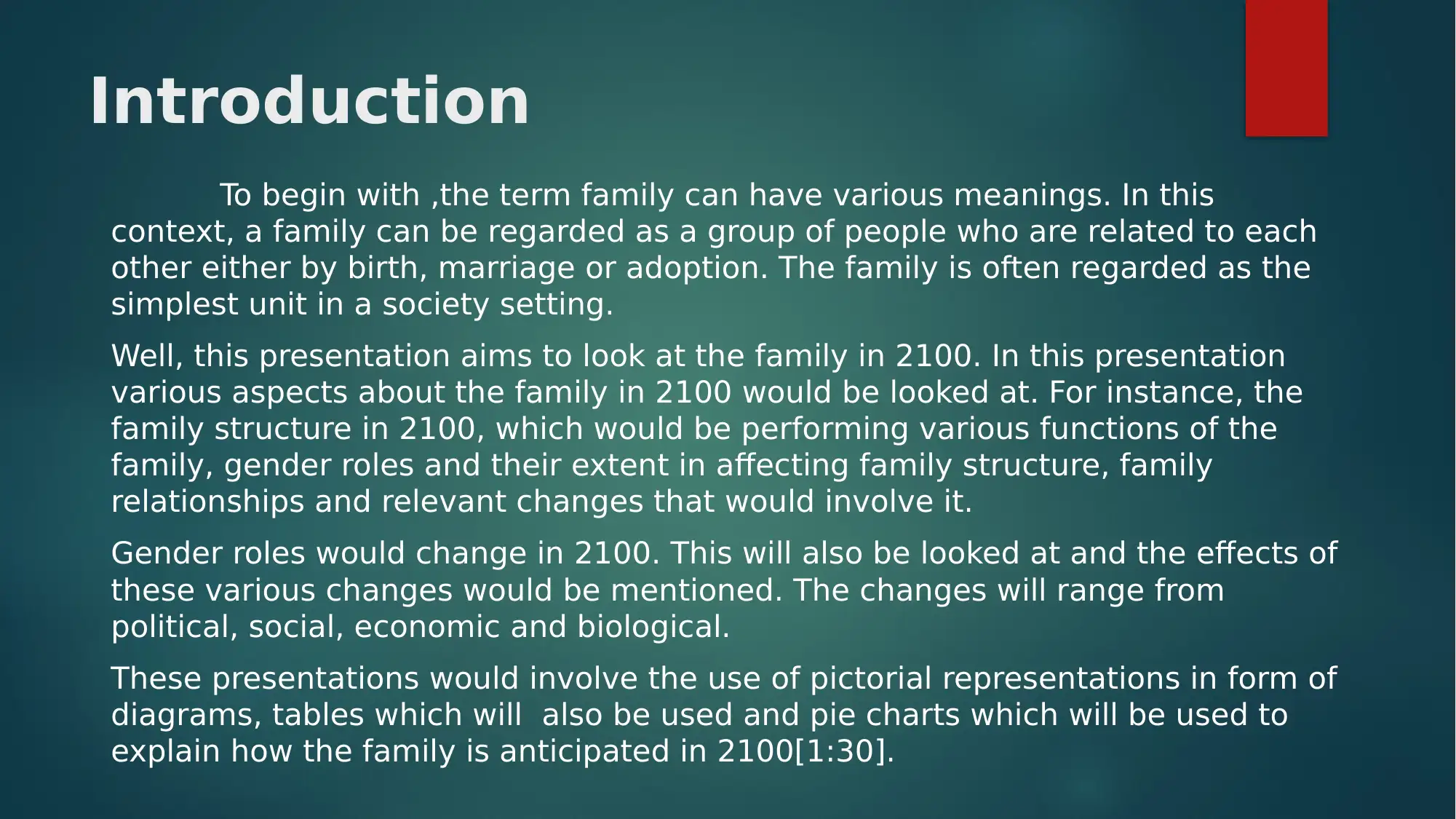
Introduction
To begin with ,the term family can have various meanings. In this
context, a family can be regarded as a group of people who are related to each
other either by birth, marriage or adoption. The family is often regarded as the
simplest unit in a society setting.
Well, this presentation aims to look at the family in 2100. In this presentation
various aspects about the family in 2100 would be looked at. For instance, the
family structure in 2100, which would be performing various functions of the
family, gender roles and their extent in affecting family structure, family
relationships and relevant changes that would involve it.
Gender roles would change in 2100. This will also be looked at and the effects of
these various changes would be mentioned. The changes will range from
political, social, economic and biological.
These presentations would involve the use of pictorial representations in form of
diagrams, tables which will also be used and pie charts which will be used to
explain how the family is anticipated in 2100[1:30].
To begin with ,the term family can have various meanings. In this
context, a family can be regarded as a group of people who are related to each
other either by birth, marriage or adoption. The family is often regarded as the
simplest unit in a society setting.
Well, this presentation aims to look at the family in 2100. In this presentation
various aspects about the family in 2100 would be looked at. For instance, the
family structure in 2100, which would be performing various functions of the
family, gender roles and their extent in affecting family structure, family
relationships and relevant changes that would involve it.
Gender roles would change in 2100. This will also be looked at and the effects of
these various changes would be mentioned. The changes will range from
political, social, economic and biological.
These presentations would involve the use of pictorial representations in form of
diagrams, tables which will also be used and pie charts which will be used to
explain how the family is anticipated in 2100[1:30].
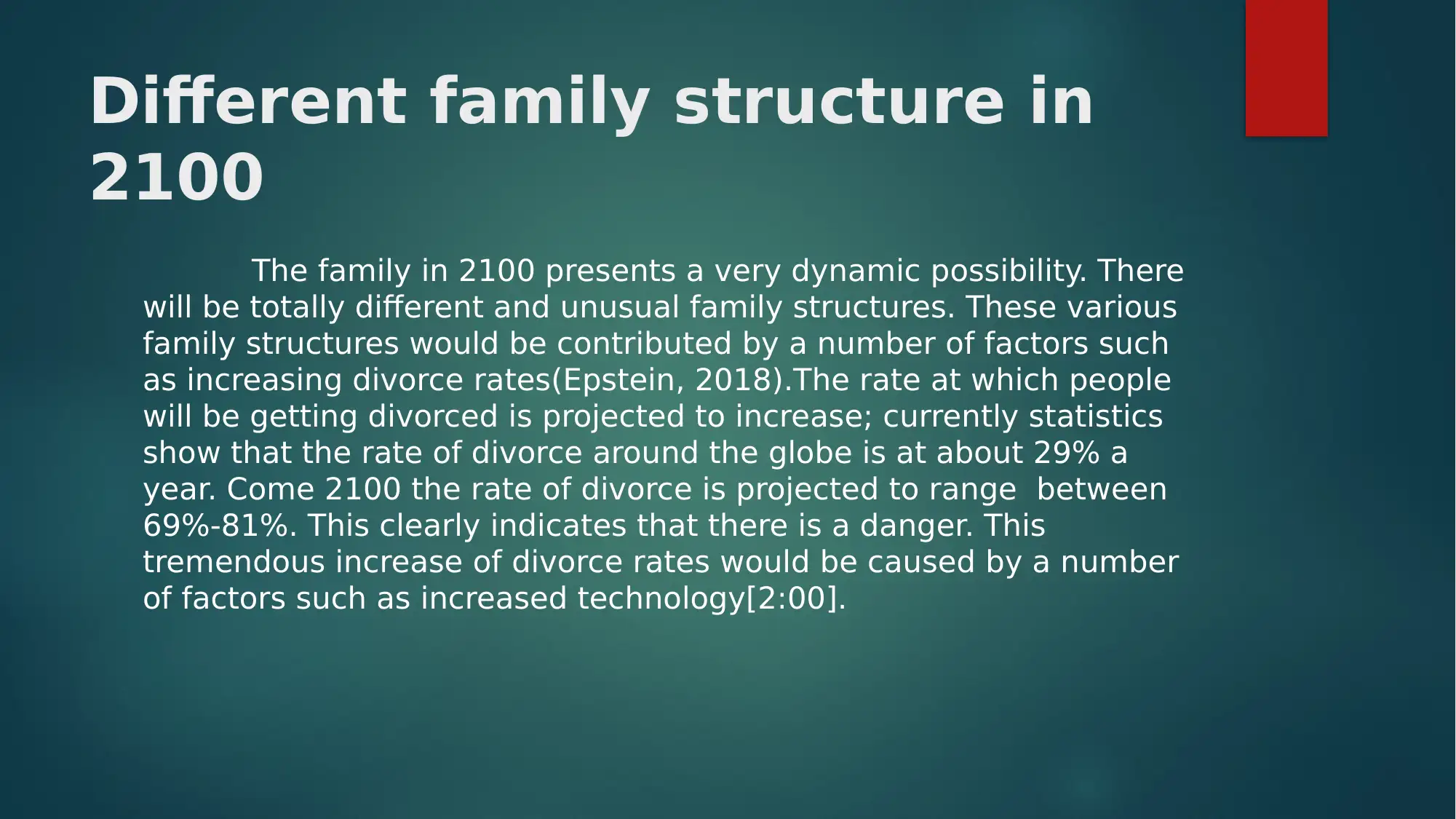
Different family structure in
2100
The family in 2100 presents a very dynamic possibility. There
will be totally different and unusual family structures. These various
family structures would be contributed by a number of factors such
as increasing divorce rates(Epstein, 2018).The rate at which people
will be getting divorced is projected to increase; currently statistics
show that the rate of divorce around the globe is at about 29% a
year. Come 2100 the rate of divorce is projected to range between
69%-81%. This clearly indicates that there is a danger. This
tremendous increase of divorce rates would be caused by a number
of factors such as increased technology[2:00].
2100
The family in 2100 presents a very dynamic possibility. There
will be totally different and unusual family structures. These various
family structures would be contributed by a number of factors such
as increasing divorce rates(Epstein, 2018).The rate at which people
will be getting divorced is projected to increase; currently statistics
show that the rate of divorce around the globe is at about 29% a
year. Come 2100 the rate of divorce is projected to range between
69%-81%. This clearly indicates that there is a danger. This
tremendous increase of divorce rates would be caused by a number
of factors such as increased technology[2:00].
⊘ This is a preview!⊘
Do you want full access?
Subscribe today to unlock all pages.

Trusted by 1+ million students worldwide
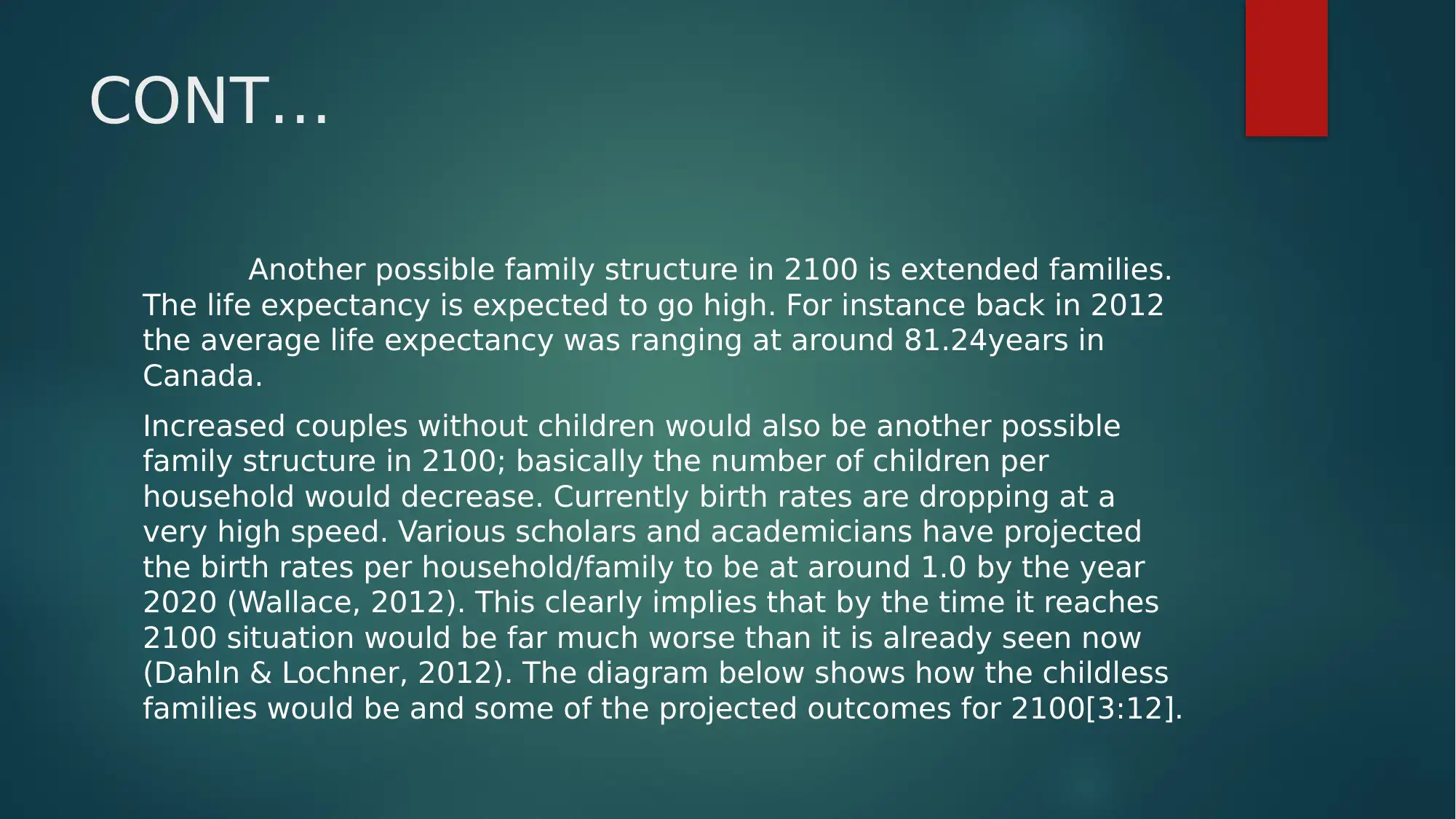
CONT…
Another possible family structure in 2100 is extended families.
The life expectancy is expected to go high. For instance back in 2012
the average life expectancy was ranging at around 81.24years in
Canada.
Increased couples without children would also be another possible
family structure in 2100; basically the number of children per
household would decrease. Currently birth rates are dropping at a
very high speed. Various scholars and academicians have projected
the birth rates per household/family to be at around 1.0 by the year
2020 (Wallace, 2012). This clearly implies that by the time it reaches
2100 situation would be far much worse than it is already seen now
(Dahln & Lochner, 2012). The diagram below shows how the childless
families would be and some of the projected outcomes for 2100[3:12].
Another possible family structure in 2100 is extended families.
The life expectancy is expected to go high. For instance back in 2012
the average life expectancy was ranging at around 81.24years in
Canada.
Increased couples without children would also be another possible
family structure in 2100; basically the number of children per
household would decrease. Currently birth rates are dropping at a
very high speed. Various scholars and academicians have projected
the birth rates per household/family to be at around 1.0 by the year
2020 (Wallace, 2012). This clearly implies that by the time it reaches
2100 situation would be far much worse than it is already seen now
(Dahln & Lochner, 2012). The diagram below shows how the childless
families would be and some of the projected outcomes for 2100[3:12].
Paraphrase This Document
Need a fresh take? Get an instant paraphrase of this document with our AI Paraphraser
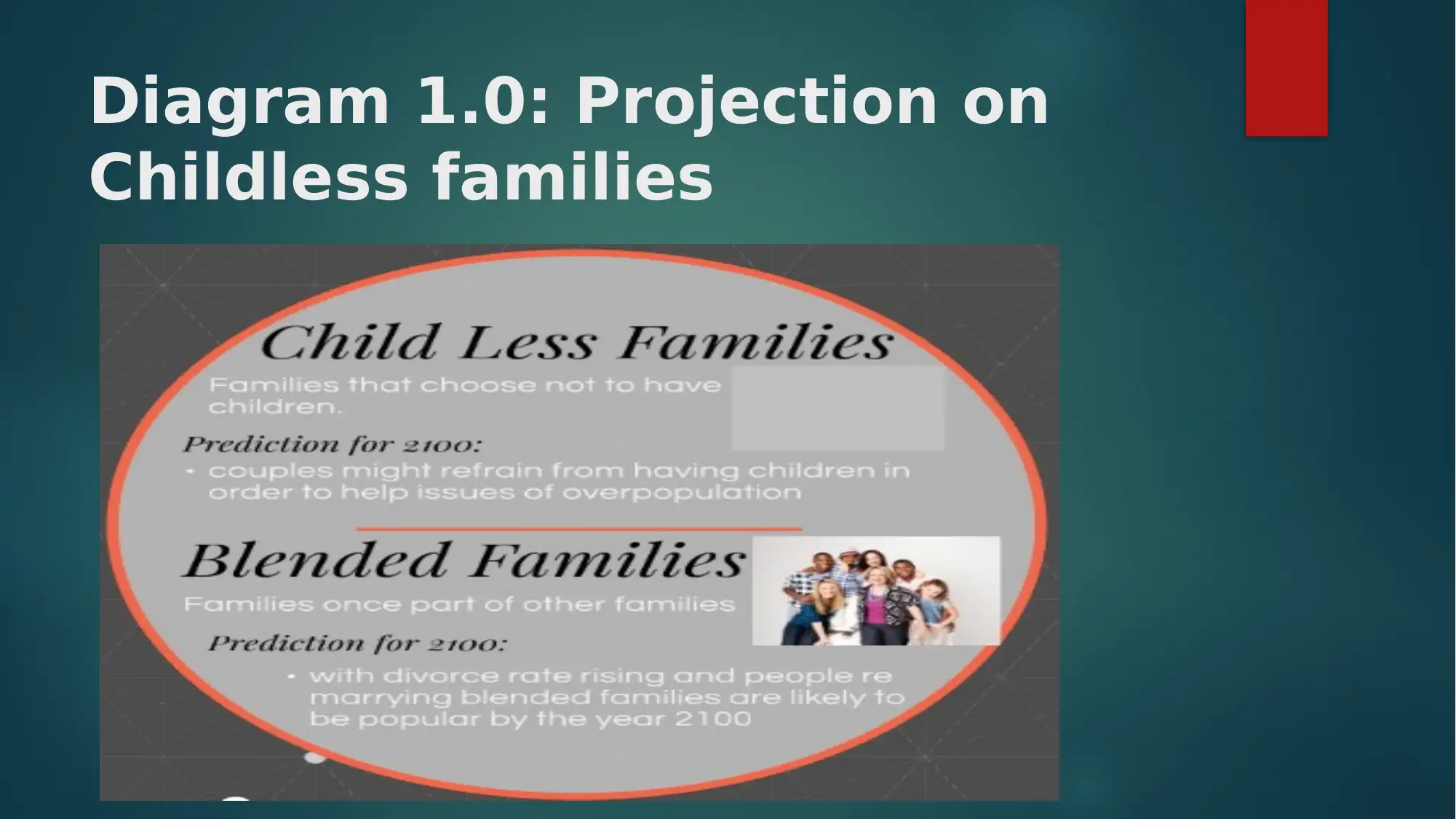
Diagram 1.0: Projection on
Childless families
Childless families
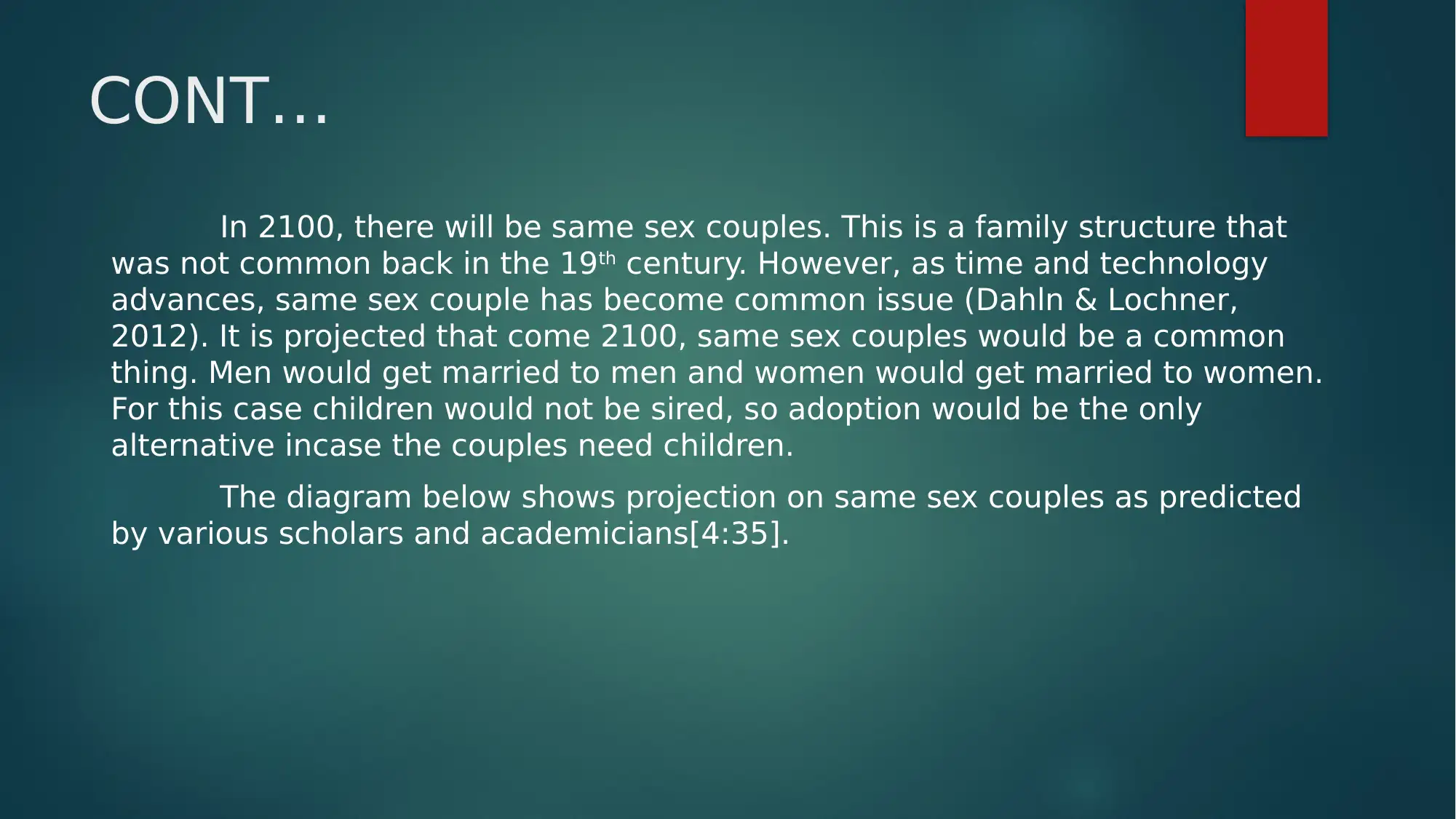
CONT…
In 2100, there will be same sex couples. This is a family structure that
was not common back in the 19th century. However, as time and technology
advances, same sex couple has become common issue (Dahln & Lochner,
2012). It is projected that come 2100, same sex couples would be a common
thing. Men would get married to men and women would get married to women.
For this case children would not be sired, so adoption would be the only
alternative incase the couples need children.
The diagram below shows projection on same sex couples as predicted
by various scholars and academicians[4:35].
In 2100, there will be same sex couples. This is a family structure that
was not common back in the 19th century. However, as time and technology
advances, same sex couple has become common issue (Dahln & Lochner,
2012). It is projected that come 2100, same sex couples would be a common
thing. Men would get married to men and women would get married to women.
For this case children would not be sired, so adoption would be the only
alternative incase the couples need children.
The diagram below shows projection on same sex couples as predicted
by various scholars and academicians[4:35].
⊘ This is a preview!⊘
Do you want full access?
Subscribe today to unlock all pages.

Trusted by 1+ million students worldwide
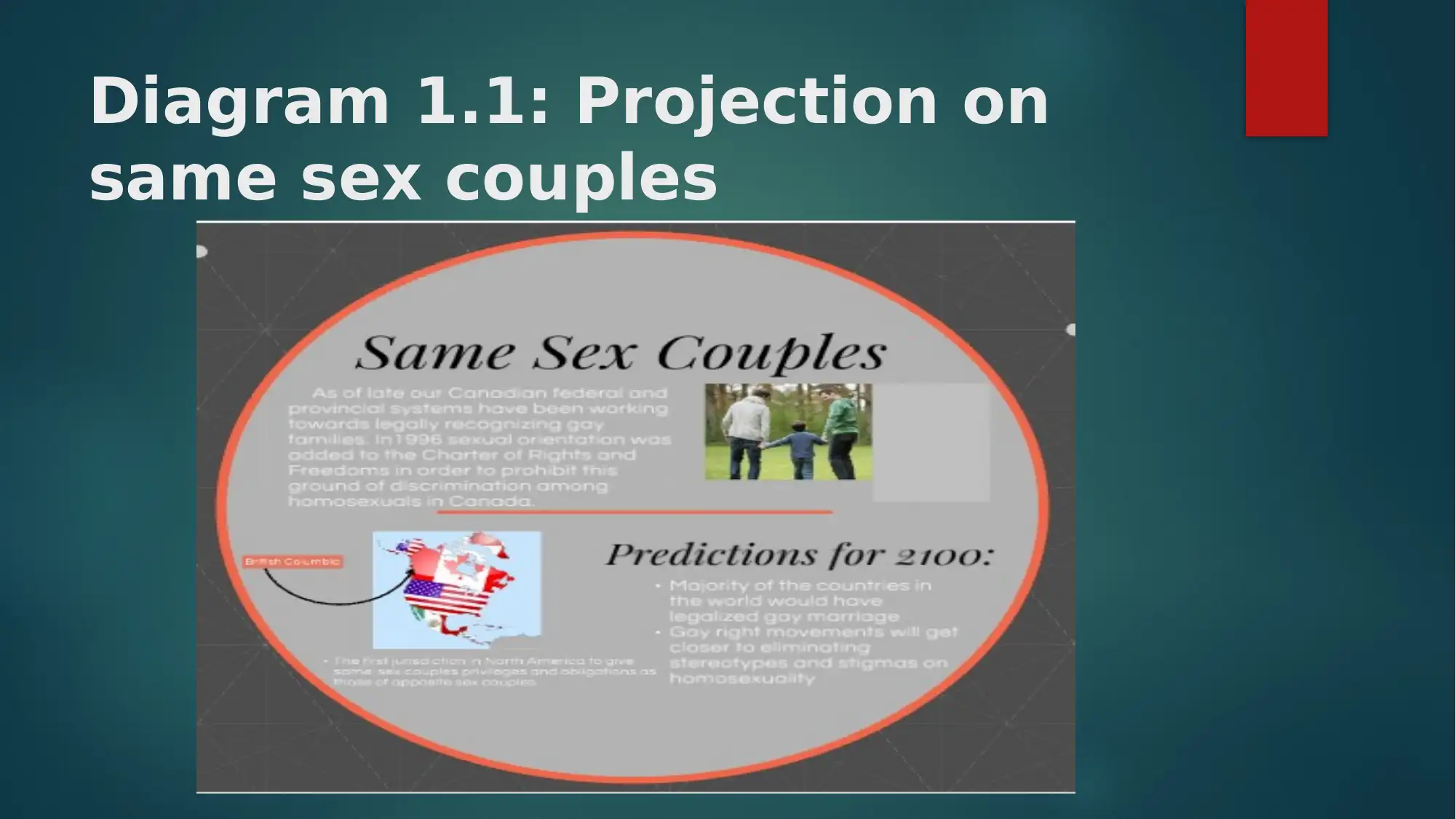
Diagram 1.1: Projection on
same sex couples
same sex couples
Paraphrase This Document
Need a fresh take? Get an instant paraphrase of this document with our AI Paraphraser
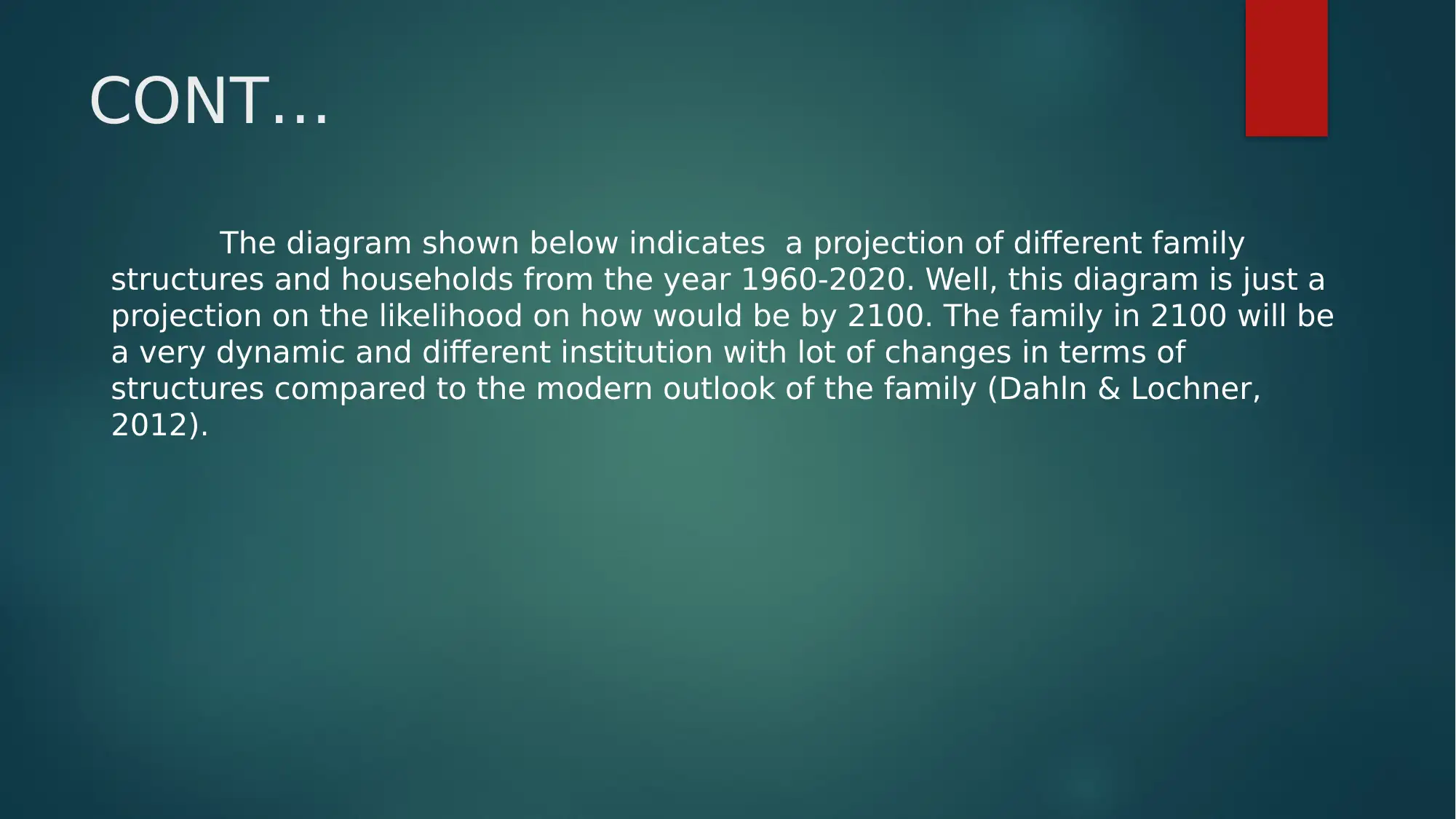
CONT…
The diagram shown below indicates a projection of different family
structures and households from the year 1960-2020. Well, this diagram is just a
projection on the likelihood on how would be by 2100. The family in 2100 will be
a very dynamic and different institution with lot of changes in terms of
structures compared to the modern outlook of the family (Dahln & Lochner,
2012).
The diagram shown below indicates a projection of different family
structures and households from the year 1960-2020. Well, this diagram is just a
projection on the likelihood on how would be by 2100. The family in 2100 will be
a very dynamic and different institution with lot of changes in terms of
structures compared to the modern outlook of the family (Dahln & Lochner,
2012).
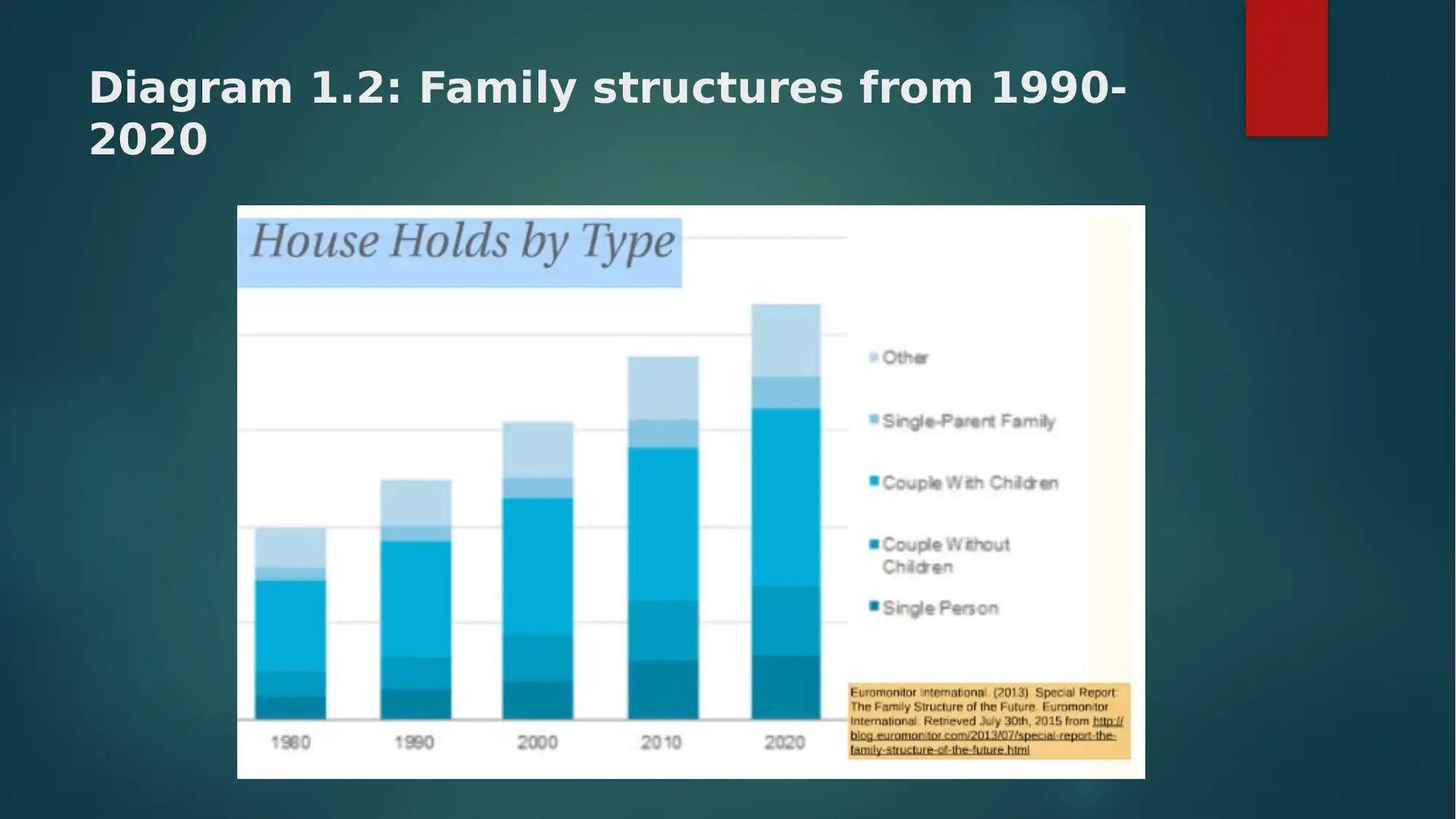
Diagram 1.2: Family structures from 1990-
2020
2020
⊘ This is a preview!⊘
Do you want full access?
Subscribe today to unlock all pages.

Trusted by 1+ million students worldwide
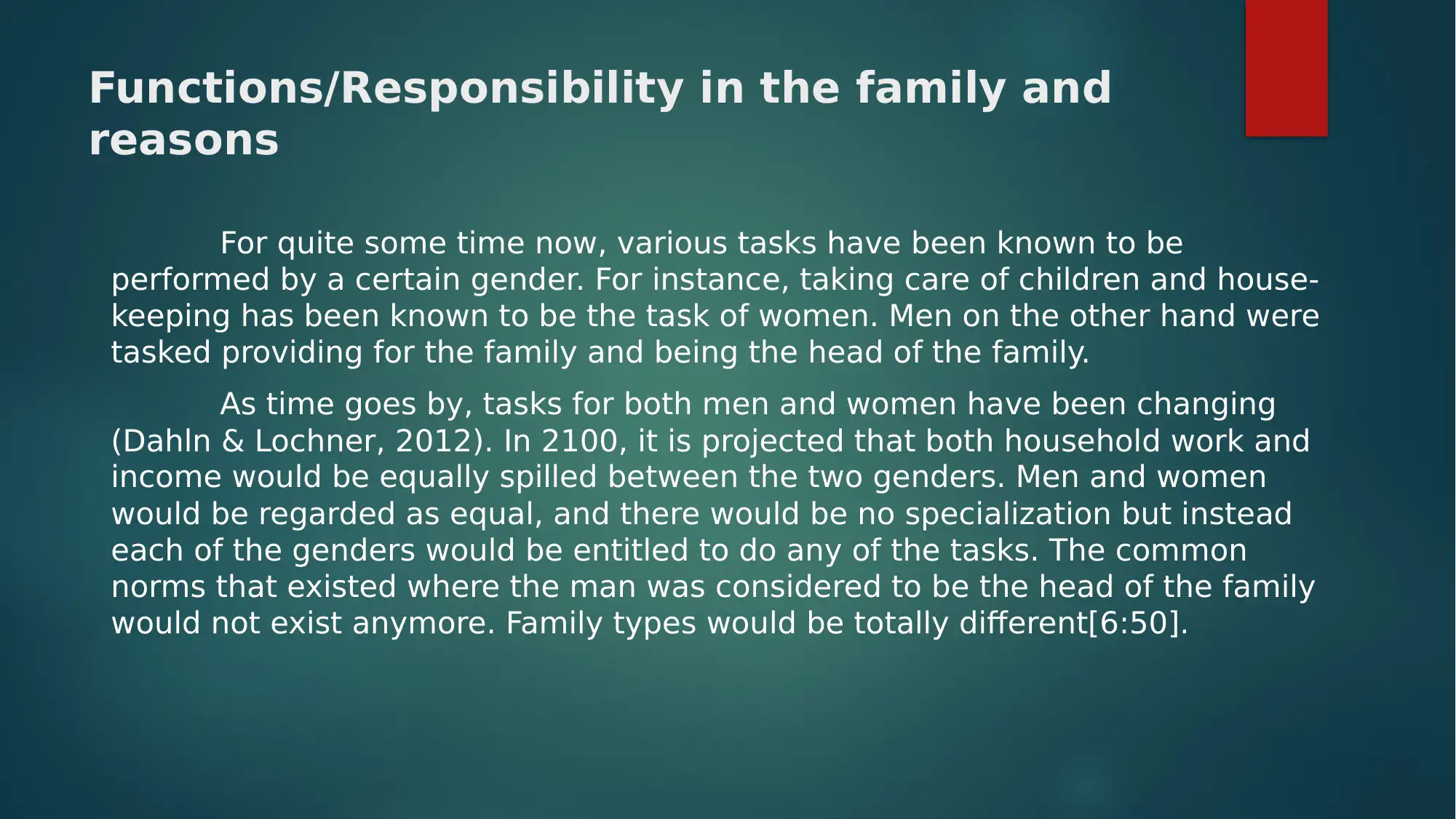
Functions/Responsibility in the family and
reasons
For quite some time now, various tasks have been known to be
performed by a certain gender. For instance, taking care of children and house-
keeping has been known to be the task of women. Men on the other hand were
tasked providing for the family and being the head of the family.
As time goes by, tasks for both men and women have been changing
(Dahln & Lochner, 2012). In 2100, it is projected that both household work and
income would be equally spilled between the two genders. Men and women
would be regarded as equal, and there would be no specialization but instead
each of the genders would be entitled to do any of the tasks. The common
norms that existed where the man was considered to be the head of the family
would not exist anymore. Family types would be totally different[6:50].
reasons
For quite some time now, various tasks have been known to be
performed by a certain gender. For instance, taking care of children and house-
keeping has been known to be the task of women. Men on the other hand were
tasked providing for the family and being the head of the family.
As time goes by, tasks for both men and women have been changing
(Dahln & Lochner, 2012). In 2100, it is projected that both household work and
income would be equally spilled between the two genders. Men and women
would be regarded as equal, and there would be no specialization but instead
each of the genders would be entitled to do any of the tasks. The common
norms that existed where the man was considered to be the head of the family
would not exist anymore. Family types would be totally different[6:50].
Paraphrase This Document
Need a fresh take? Get an instant paraphrase of this document with our AI Paraphraser
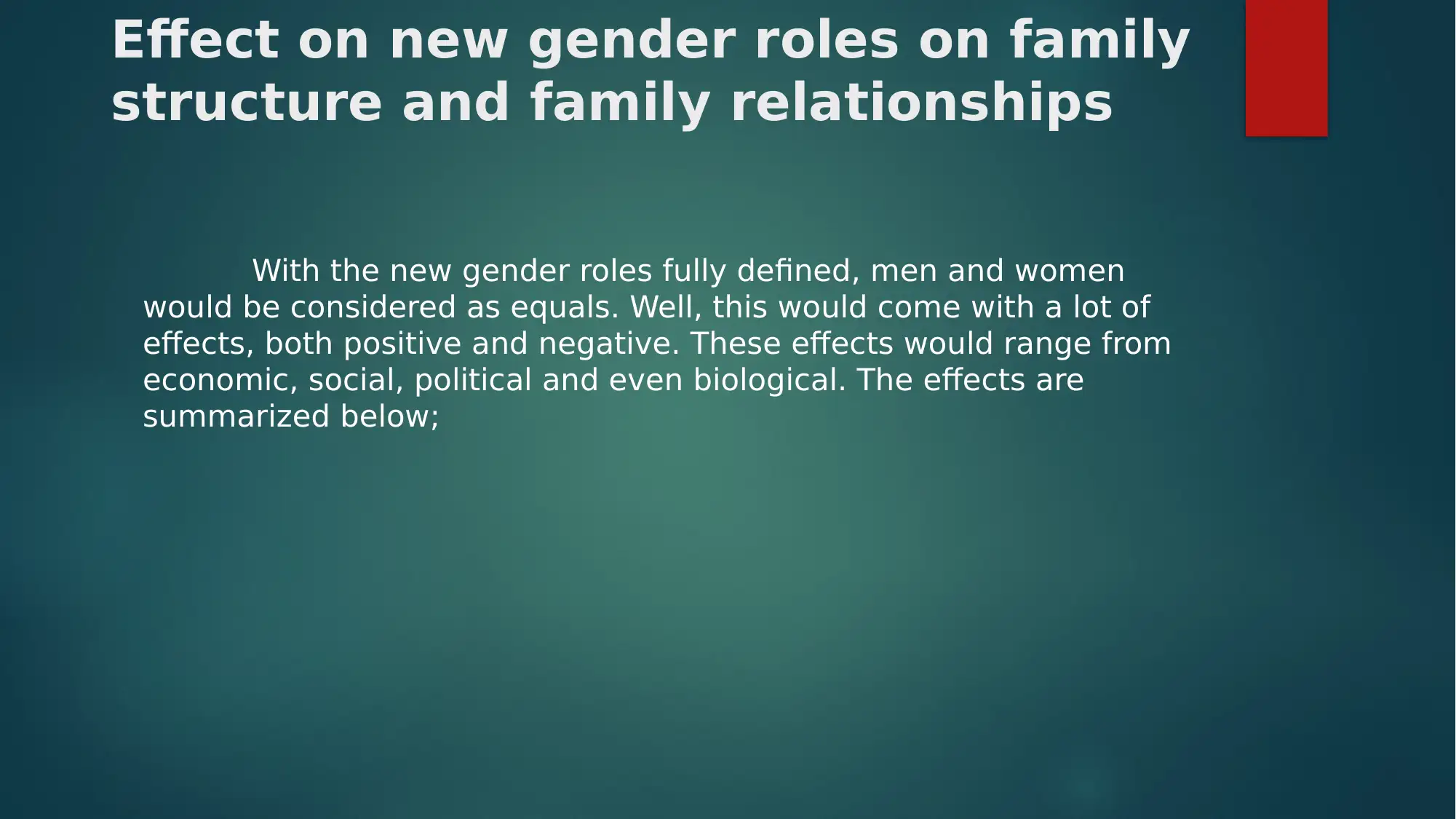
Effect on new gender roles on family
structure and family relationships
With the new gender roles fully defined, men and women
would be considered as equals. Well, this would come with a lot of
effects, both positive and negative. These effects would range from
economic, social, political and even biological. The effects are
summarized below;
structure and family relationships
With the new gender roles fully defined, men and women
would be considered as equals. Well, this would come with a lot of
effects, both positive and negative. These effects would range from
economic, social, political and even biological. The effects are
summarized below;
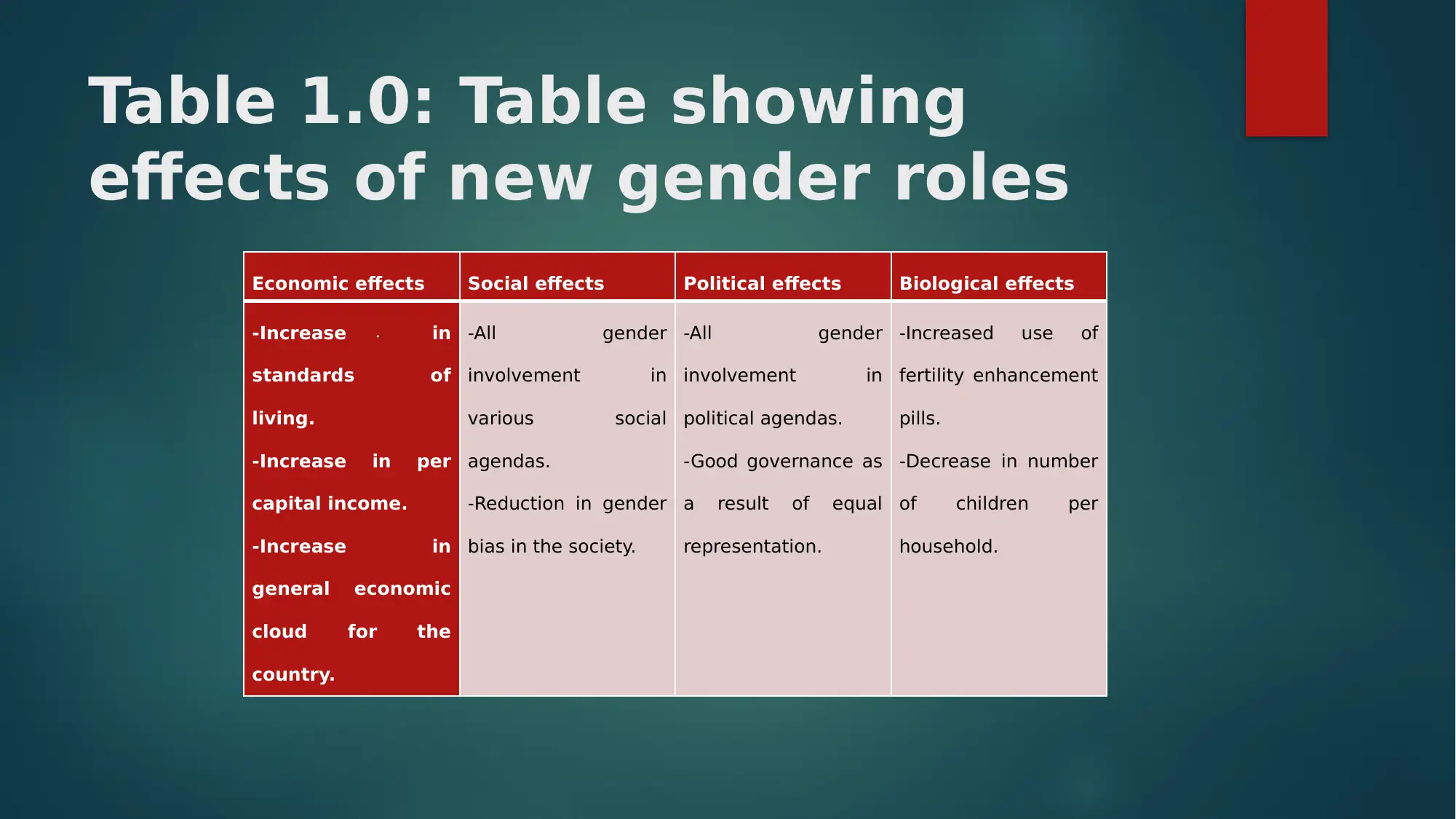
Table 1.0: Table showing
effects of new gender roles
Economic effects Social effects Political effects Biological effects
-Increase in
standards of
living.
-Increase in per
capital income.
-Increase in
general economic
cloud for the
country.
-All gender
involvement in
various social
agendas.
-Reduction in gender
bias in the society.
-All gender
involvement in
political agendas.
-Good governance as
a result of equal
representation.
-Increased use of
fertility enhancement
pills.
-Decrease in number
of children per
household.
.
effects of new gender roles
Economic effects Social effects Political effects Biological effects
-Increase in
standards of
living.
-Increase in per
capital income.
-Increase in
general economic
cloud for the
country.
-All gender
involvement in
various social
agendas.
-Reduction in gender
bias in the society.
-All gender
involvement in
political agendas.
-Good governance as
a result of equal
representation.
-Increased use of
fertility enhancement
pills.
-Decrease in number
of children per
household.
.
⊘ This is a preview!⊘
Do you want full access?
Subscribe today to unlock all pages.

Trusted by 1+ million students worldwide
1 out of 17
Your All-in-One AI-Powered Toolkit for Academic Success.
+13062052269
info@desklib.com
Available 24*7 on WhatsApp / Email
![[object Object]](/_next/static/media/star-bottom.7253800d.svg)
Unlock your academic potential
Copyright © 2020–2025 A2Z Services. All Rights Reserved. Developed and managed by ZUCOL.


